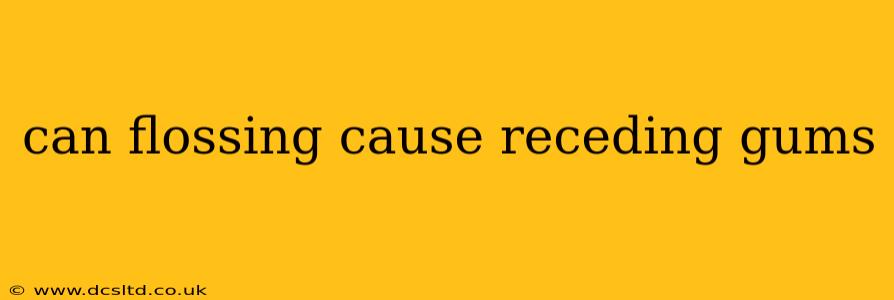Can Flossing Cause Receding Gums? The Truth About Flossing and Gum Health
The question of whether flossing can cause receding gums is a complex one, and the short answer is: generally, no, proper flossing should not cause receding gums. However, improper flossing technique can contribute to gum recession, alongside other factors. This article will delve into the details, exploring the relationship between flossing and gum health, addressing common misconceptions, and providing tips for safe and effective flossing.
Understanding Gum Recession
Gum recession, the process where your gums pull back, exposing more of your teeth, is a common dental issue. While aging is a natural contributor, several factors can accelerate it, including:
- Aggressive brushing: Brushing too hard or using a hard-bristled toothbrush can damage gum tissue.
- Gum disease (periodontitis): Infection and inflammation destroy the tissues supporting your teeth.
- Genetics: Some individuals are genetically predisposed to gum recession.
- Teeth grinding (bruxism): This can put excessive pressure on the gums.
- Improper flossing technique: This is where the connection to flossing comes into play.
How Improper Flossing Can Contribute to Gum Recession
The key here is improper technique. Using excessive force while flossing, snapping the floss against the gums, or using a sawing motion can irritate and damage the gum tissue, potentially leading to recession over time. The gums are delicate, and harsh flossing can injure them just as aggressive brushing can.
What are the signs of improper flossing?
- Bleeding gums: While some bleeding is normal initially when you start flossing regularly, persistent bleeding is a sign of irritation and potential damage.
- Pain or discomfort: Flossing should not be painful. If it is, you're likely using too much force or an incorrect technique.
- Noticeable gum recession: If you notice your gums are receding, it's crucial to evaluate your flossing technique and see a dentist.
What is the correct flossing technique?
The proper technique involves gentle, curving motions. Instead of snapping the floss against the gums, gently curve it around each tooth in a "C" shape, ensuring you reach below the gumline. Avoid sawing back and forth. Use a new section of floss for each tooth.
Can flossing be too aggressive?
Yes, absolutely. Using too much pressure, regardless of the technique, can cause damage to the gums. The goal is to remove plaque and food particles, not to scrape away gum tissue.
What should I do if I think my flossing is causing gum recession?
Stop using that technique immediately and consult your dentist or periodontist. They can assess the situation, determine the cause of the recession, and recommend appropriate treatment and flossing techniques. They can also rule out other underlying causes, such as periodontal disease.
Alternatives to Traditional Flossing:
If traditional floss is proving difficult or causing irritation, consider alternatives such as:
- Interdental brushes: These small brushes are designed to clean between teeth and can be gentler on the gums.
- Water flossers: These devices use pressurized water to remove plaque and food particles.
Conclusion:
Flossing is an essential part of maintaining good oral hygiene, but the way you floss matters significantly. Proper technique involves gentle curving motions and avoiding excessive force. If you experience bleeding, pain, or notice gum recession, stop and consult your dentist. They can help you determine the cause and recommend the best course of action for maintaining healthy gums and teeth. Remember, preventing gum recession is far easier than treating it. Gentle, consistent flossing is key to a healthy smile.
